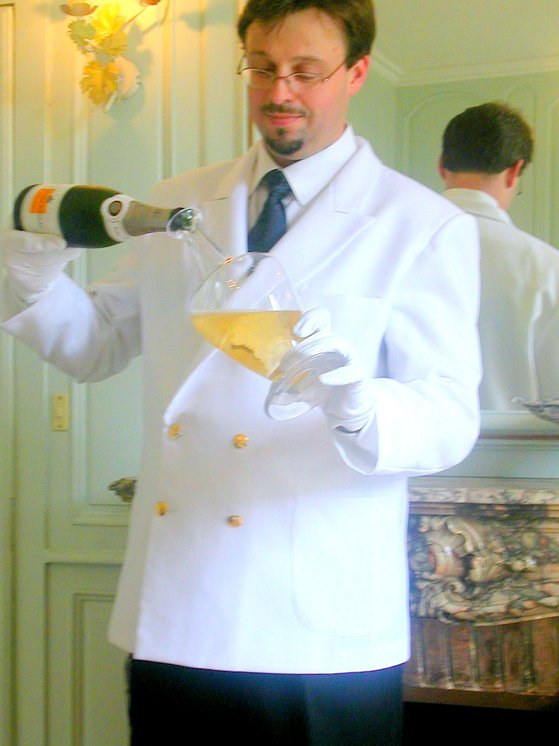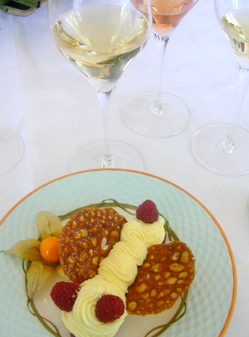The bubbles, that is. In some Champagnes, they're what you want. Why else bother? But sometimes, you want fewer bubbles.
Here's Sam Sifton, outgoing (and out-going) restaurant critic for the New York Times, on decanting a brut rosé at Per Se. He's skeptical, but the sommelier knows what she's doing.
"The sommelier brought Champagne, a brut rosé from H. Billiot, which she then poured into a giant decanter and swirled theatrically, over and over again, to dissipate the bubbles. She said this would highlight the flavor of the pinot noir grapes in the wine, and make it a better pairing for the food."I called shenanigans then. I was laughing as I said it, but I used language inappropriate to any restaurant. My mother would have slapped me, no lie. .
"But the sommelier only laughed. It was as if she had heard a pigeon swear in the accent of a Bowery Bum. "We'll see," she said, and poured the wine. "I think you will like it."
"We swooned. Swirling brut rosé Champagne in a decanter to dissipate the carbonation before eating burrata is standard operating procedure for all of us now."
I first encountered the practice of decanting Champagne at Veuve Clicquot's private townhouse in Reims over a decade ago. You figure they ought to know what they're doing. And they decant the Rich Reserve, to reduce the distraction (and the acidity) of the bubbles and to highlight the wine's luscious flavors. With dessert, as shown.
By the way, if you're curious about Veuve Clicquot's practice about releasing its best Champagnes in vintage-dated bottles, read this.


Leave a comment